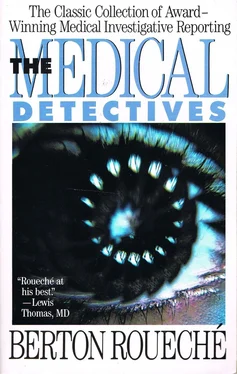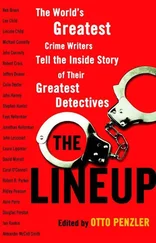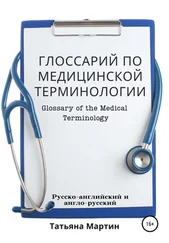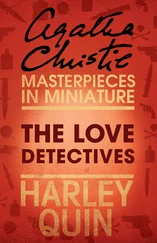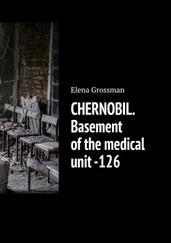The surveillance of carriers is one of several innovations that in little more than a generation have forced typhoid fever into an abrupt tractability throughout most of the Western world. The others include certain refinements in diagnostic technique, the institution of public-health measures requiring the chlorination of city-supplied water and proscribing the sale of unpasteurized milk, and the development of an immunizing vaccine. Since late in the nineteenth century, the local incidence of typhoid fever has dropped from five or six thousand cases a year to fewer than fifty, and it is very possible that it may soon be as rare as smallpox. Banishment has not, however, materially impaired the vigor of Eberthella typhosa.
Typhoid fever is still a cruel and withering affliction. It is always rambunctious, generally prolonged, and often fatal. It is also one of the most explosive of communicable diseases. The month in which it is most volcanic is August.
The investigator who led the sprint to Washington Heights that August morning in 1946 was Dr. Harold T. Fuerst, an epidemiologist, and he and Dr. Ottavio J. Pellitteri, another epidemiologist, handled most of the medical inquiry. One afternoon, when I was down at the Bureau, they told me about the case. Miss Gamso sat at a desk nearby, and I noticed after a moment that she was following the conversation with rapt attention. Her interest, it turned out, was entirely understandable. Typhoid-fever investigations are frequently tedious, but they are seldom protracted. It is not unusual for a team of experienced operatives to descry the source of an outbreak in a couple of days. Some cases have been riddled in an afternoon. The root of the trouble on Washington Heights eluded detection for almost two weeks, and it is probable that but for Miss Gamso it would never have been detected at all.
"I got to Presbyterian around eleven," Dr. Fuerst told me. "I found a staff man I knew, and he led me up to the patients. It was typhoid, all right. Not that I'd doubted it, but it's routine to take a look. And they were in bad shape—too miserable to talk. One—the woman—was barely conscious. I decided to let the questioning go for the time being. At least until I'd seen their histories. A clerk in the office of the medical superintendent dug them out for me. Pretty skimpy—name, age, sex, occupation, and address, and u few clinical notations. About all I got at a glance was that they weren't members of the same family. I'd hoped, naturally, that l hey would be. That would have nicely limited the scope of the investigation. Then I noticed something interesting. They weren't a family, but they had a little more in common than just typhoid. For one thing, they were by way of being neighbors. One of them lived at 502 West 180th Street, another at 501 West 178th Street, and the third at 285 Audubon Avenue, just around the corner from where it runs through the five-hundred block of West 179th Street. Another thing was their surnames. They were different, but they weren't dissimilar. All three were of Armenian origin. Well, Washington Heights has an Armenian colony—very small and very clannish. I began to feel pretty good. I didn't doubt for a minute that the three of them knew each other. Quite possibly they were friends. If so, it was reasonable to suppose that they might recently have shared a meal. It wasn't very likely, of course, that they had been the only ones to share it. Ten-year-old boys don't usually go out to meals without their parents. Maybe there had been a dozen in on it. It could even have been some sort of national feast. Or a church picnic. Picnic food is an ideal breeding ground for the typhoid organism. It can't stand cooking, but it thrives in raw stuff—ice cream and mayonnaise and so on. And if a carrier had happened to have a hand in the arrangements. . . I decided we'd do well to check and see if there was an Armenian carrier on our list."
"We found one, all right," Dr. Pellitteri said. "A widow named Christos—she died a year or two ago—who lived on West 178th Street."
"To be sure, we had only three cases," Dr. Fuerst went on. "But I didn't let that bother me. I've never known an outbreak of typhoid in which everybody who was exposed got sick. There are always a certain number who escape. They either don't eat whatever it is that's contaminated or they have a natural or an acquired immunity. Moreover, the incubation period in typhoid—the time it takes for the bug to catch hold—varies with the individual. Ten days is about the average, but it can run anywhere from three to thirty. In other words, maybe we had seen only the vanguard. There might be more to come. So in the absence of anything better, the Armenian link looked pretty good. I called the Bureau and told Bill Birnkrant—he was acting director at the time—what I thought, and he seemed to think the same. He said he'd start somebody checking. I went back upstairs for another try at the patients."
"That's when the rest of us began to come into the picture," Dr. Pellitteri said. "My job was the recent social life of the Armenian colony. Ida Matthews, a public-health nurse, took the carrier angle. Neither of us had much luck. The file listed twelve carriers in Washington Heights. As I remember, the only Armenian was Mrs. Christos. At any rate, the nurse picked her first. I remember running into Miss Matthews somewhere on Audubon toward the end of that first afternoon. She told me what progress she had made. None. Mrs. Christos was old and sick, and hadn't been out of her apartment for a month. Miss Matthews said there was no reason to doubt the woman's word, as she had a good reputation at the Department—very cooperative, obeyed all the rules. Miss Matthews was feeling pretty gloomy. She'd had high hopes. Well, I knew how she felt. I'd hit nothing but dead ends myself. Our patients didn't seem to be friends. Apparently, they just knew each other. The priest at the Gregorian church in the neighborhood—Holy Cross Armenian Apostolic, on West 187th Street—knew of no recent feasts or festivals. He hadn't heard of any unusual amount of illness in the parish, either. No mysterious chills and fevers. And the Armenian doctors in the neighborhood said the same. They had seen nothing that resembled typhoid except the cases we already had. Before I gave up for the day, I even got in touch with an Armenian girl who used to work at the Department. The only thing I could think of at the moment was a check of the Armenian restaurants. When I mentioned that, she burst out laughing. It seems Armenians don't frequent Armenian restaurants. They prefer home cooking."
"I got Pellitteri's report the next morning," Dr. Fuerst said.
"And Miss Matthews'. I was back at the hospital, and when I called Birnkrant, he gave me the gist of them. I can't say I was greatly surprised. To tell the truth, I was relieved. The Armenian picnic I'd hypothesized the day before would have created a real mess. Because the hospital had reported two new cases. Two women. They lived at 500 West 178th Street and 611 West 180th Street, but they weren't Armenians. One was Italian. The other was plain American. So we were right back where we started. Only, now we had five cases instead of three, and nothing to tie them together but the fact that they all lived in the same neighborhood. And had the same brand of typhoid. There are around a dozen different strains, you know, which sometimes complicates matters. About the only thing Birnkrant and I could be sure of was that the feast theory—any kind of common gathering—was out. I'd had a word with the new patients. They had never even heard of each other. So the link had to be indirect. That gave us a number of possibilities. The source of infection could be water—either drinking water or a swimming pool. Or it could be commercial ice. Or milk. Or food. Drinking water was a job for Sanitary Engineering. The others, at the moment, were up to us—meaning Pellitteri and me. They were all four conceivable. Even ice. You can find a precedent for anything and everything in the literature on typhoid. But just one was probable. That was food. Some food that is sold already prepared—like potato salad or frozen custard—or one that is usually eaten raw. All we had to do was find out what it was, and where they got it, and how it got that way. Birnkrant and I figured out the area involved. It came to roughly four square blocks. I don't know if you know that part of Washington Heights. It's no prairie. Every building is a big apartment house, and the ground floors of most are stores. At least a fourth have something to do with food."
Читать дальше
